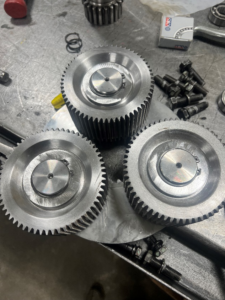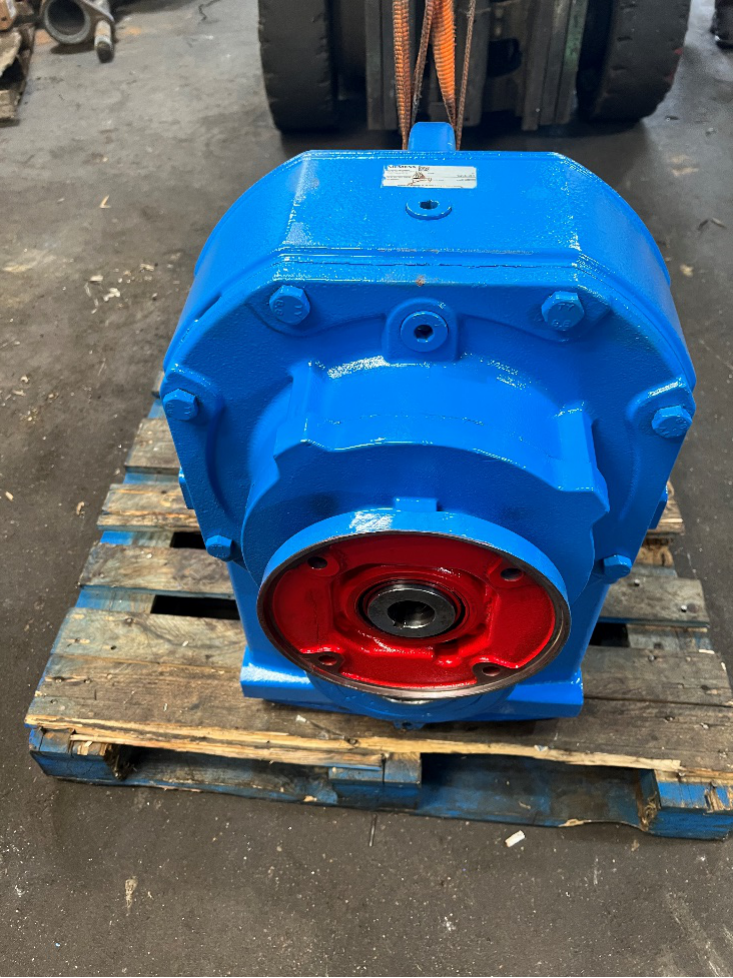In many industrial and mechanical applications, the efficient transfer of power and energy is essential for smooth operations.
However, traditional mechanical systems often struggle to meet the demands of heavy lifting, precise control, and reliable performance.
hydraulic pump is a revolutionary solution that transforms mechanical power into hydraulic energy, offering unmatched power, precision, and reliability in various applications.
If you are ready to harness the power of hydraulic systems for your machinery? Trust Hanson Gear Works, Houston’s trusted repair facility, to ensure your hydraulic pumps and systems operate at peak performance.
Let’s discuss how they work.
Key Components and Working Principles:
Regardless of the pump type, hydraulic pumps generally consist of the following components:
- Inlet Port: Where fluid enters the pump from the reservoir.
- Outlet Port: Where pressurized fluid exits the pump and flows into the hydraulic system.
- Pump Housing: Encloses the internal components and directs fluid flow.
- Prime Mover (Motor): Provides the mechanical power to drive the pump.
- Impeller, Vanes, or Pistons: Components that create the pumping action, drawing in and moving fluid.
The working principle of a hydraulic pump involves several stages:
- Intake Stroke: Fluid is drawn into the pump through the inlet port as the pump’s internal components create a low-pressure zone.
- Compression Stroke: The pump’s mechanism compresses the fluid, increasing its pressure and forcing it towards the outlet port.
- Discharge Stroke: Pressurized fluid exits the pump through the outlet port and flows into the hydraulic system, ready to perform work.
How Does A Hydraulic Pump Works?
1. Mechanical Power Source:
The hydraulic pump is typically driven by a mechanical power source, such as an electric motor, internal combustion engine, or a hydraulic motor itself. This power source provides the energy needed to operate the pump.
2. Inlet Port:
The hydraulic pump has an inlet port through which hydraulic fluid (usually oil) enters the pump from a reservoir or tank. The fluid is drawn into the pump during the intake stroke.
3. Pump Housing:
The pump housing encloses the internal components of the pump and directs the flow of hydraulic fluid through the system. It plays a crucial role in maintaining the pressure and flow rate of the fluid.
4. Internal Components:
Depending on the type of hydraulic pump (e.g., gear pump, vane pump, piston pump), internal components such as gears, vanes, or pistons are used to create the pumping action. These components generate a vacuum or low-pressure zone, which draws hydraulic fluid into the pump.

5. Compression and Discharge:
As the internal components move, they compress the hydraulic fluid, increasing its pressure. The pressurized fluid is then discharged from the pump through an outlet port, ready to be directed into the hydraulic system.
6. Hydraulic System:
The pressurized fluid exits the pump and flows into the hydraulic system, where it is directed to hydraulic cylinders, motors, or actuators. The pressure and flow of the fluid determine the force and speed of the hydraulic system’s components.
7. Work Performance:
In the hydraulic system, the pressurized fluid performs work, such as lifting heavy objects, moving machinery, or controlling the operation of hydraulic tools. The energy transferred from the hydraulic pump enables these tasks to be carried out efficiently.
Maximize Efficiency with Expert Hydraulic Pump Repair Services By Hanson Gear Works
Ensure the reliability and longevity of your hydraulic systems with Hanson Gear Works, your partner in professional pump repair.
Our team’s extensive experience and expertise extend to hydraulic pumps, valves, cylinders, and other components, allowing us to diagnose issues accurately and provide efficient repair solutions.
Contact us now to discuss your hydraulic repair needs and benefit from our unrivaled industry experience.
